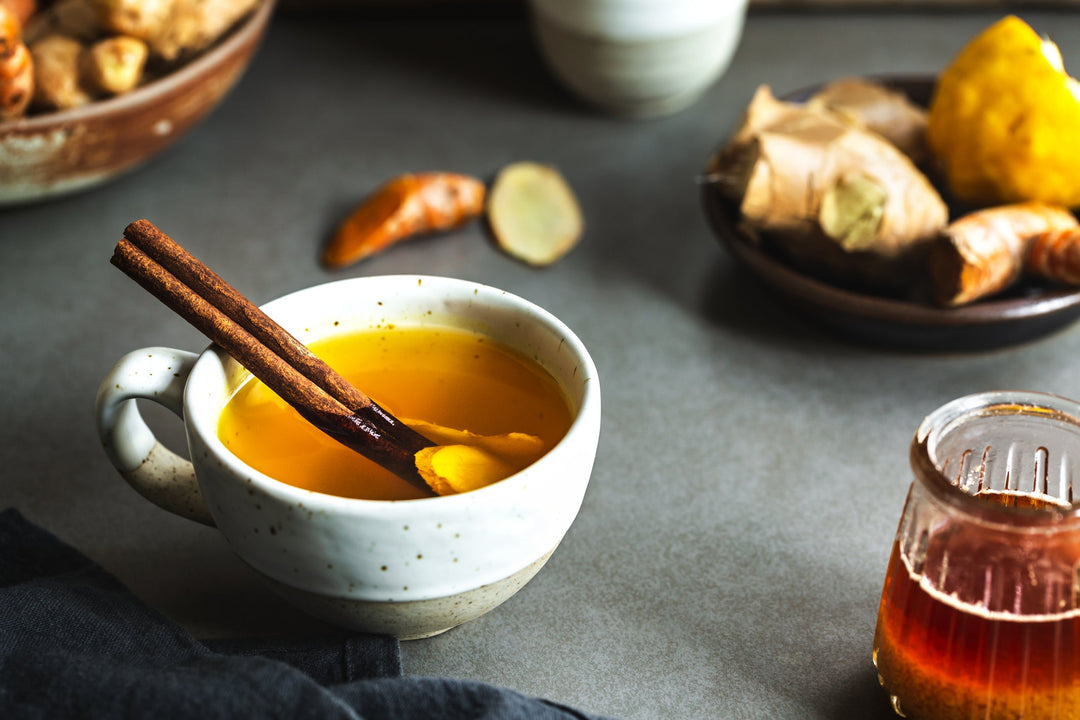Turmeric For Skin Care: What You Should Know
Turmeric for skin: How it can help reduce free radicals
For centuries, cultures all over the world have incorporated turmeric into their skincare regimens. If you’re wondering how to incorporate this golden spice into your natural beauty routine, we’ve answered some common questions about the use of turmeric in the blog post below:
Turmeric is traditionally used in Western herbal medicine to relieve inflammation
Many common skin problems like acne, eczema and scarring can be caused by inflammation. The main active ingredient found in turmeric powder is curcumin, a powerful compound that acts as both an antioxidant and has been used in Western herbal medicine as an anti-inflammatory agent. Soothing inflammation can help reduce redness, scarring, or puffiness, leaving behind a natural glow. Curcumin isn’t easily absorbed into your bloodstream on its own, so to help your body utilise as much of the compound as possible, it should be combined with another compound called piperine, which is found abundantly in black pepper. That’s why our TurmeriX blend includes black pepper, among
other ingredients, to help you get the most out of every dose of this natural superfood.
Make your own turmeric face mask at home
Skip the drugstore and create your own DIY turmeric face mask at home! You probably have the right ingredients in your pantry already. For a powerful acne-fighting spot treatment, mix a teaspoon of turmeric straight from your spice rack with ¼ teaspoon of raw, organic honey. For dull, dry skin, combine a tablespoon of regular turmeric powder from your kitchen with a tablespoon each of water and apple cider vinegar. Massage this exfoliating mask gently onto the skin, leave for 15 minutes, then rinse and pat dry. There are many easy combinations you can try, depending on the problem you want to address.
Ingest turmeric in powder or capsule form
As well as incorporating turmeric into skincare products like hand cream and soap, we also love to use turmeric powder to create wholesome turmeric recipes, from traditional Indian curries and nutrient-rich smoothies to turmeric iced lattes and naturally sweet sorbets. It’s no wonder people from all around the world have been cooking with turmeric for centuries! With its striking yellow colour and light, fragrant, earthy flavour, it’s easy to get creative when incorporating turmeric into your favourite recipes.
Will turmeric make my skin yellow?
Always exercise caution when applying turmeric to your face or skin. Because of its bright yellow pigmentation, turmeric can temporarily stain your skin or leave behind a little bit of residue. This is totally normal and can be fixed with a small amount of facial cleanser or soap.
Acne and pimples?
Even well into our adult years, acne can be a persistent problem. Pimples pop up for a variety of reasons, from hormones to stress. Using an anti-inflammatory can help treat a breakout by calming the red, irritated skin and reducing the size of those pesky, swollen bumps.Turmeric has been used in Western herbal medicine as an anti-inflammatory agent
Topical turmeric
Whether you create an easy DIY face mask or try one of our delicious turmeric recipes, there’s no reason why you can’t incorporate turmeric into your beauty routine. Before using a turmeric-based mask on your face, we suggest testing a small patch on your forearm first. If you notice any redness or irritation after 24 hours, you may be allergic. If you are taking TurmeriX capsules, always read the label and follow the directions for use.




